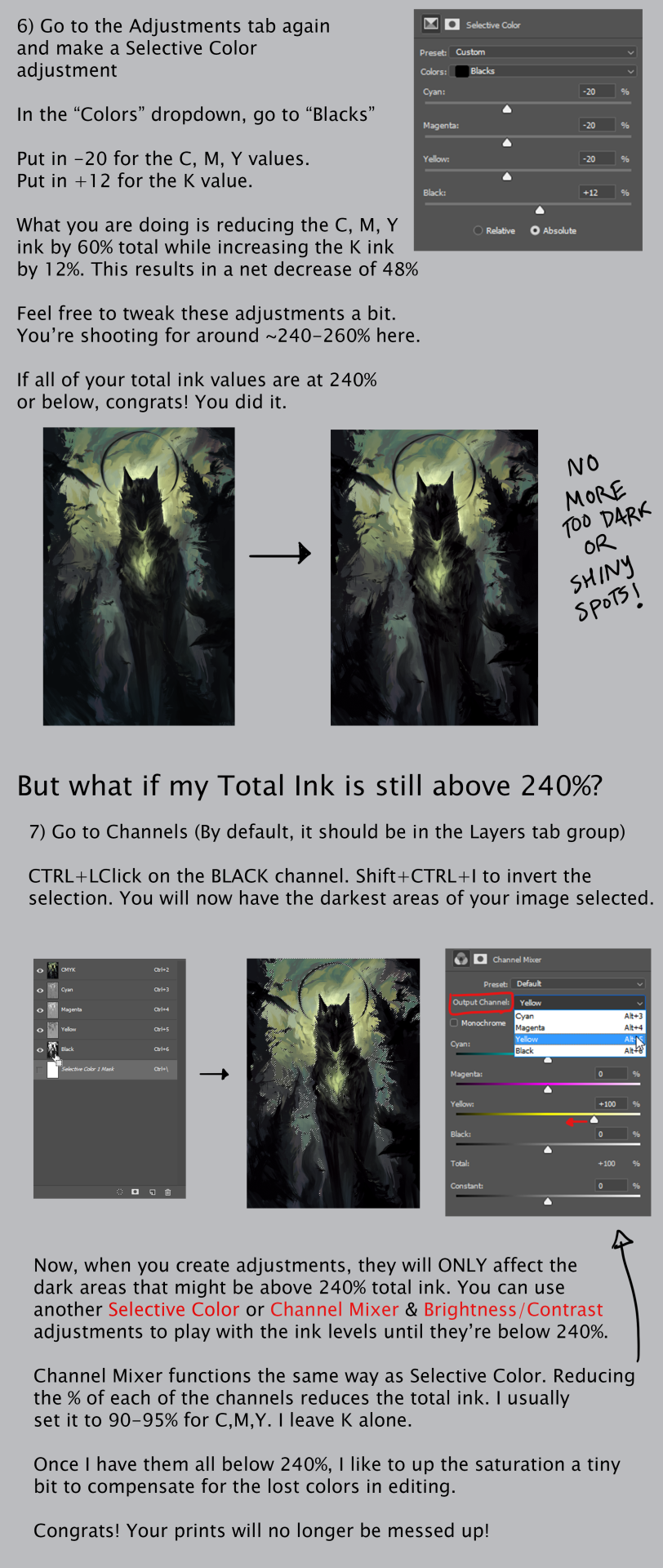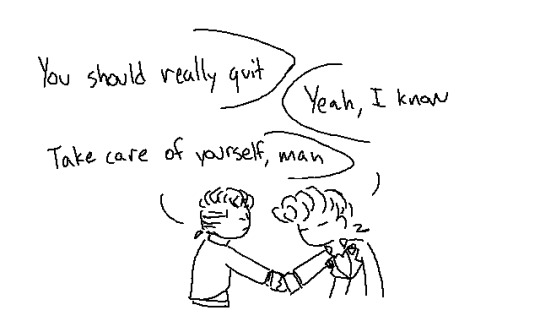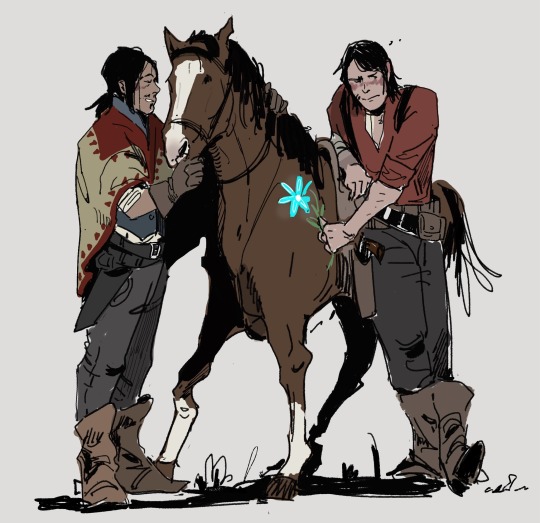Photo




An old soft proofing tutorial of mine that I’ve been getting requests to post again.
6K notes
·
View notes
Photo




these always remind me of the duwang bros, but even though they’re delinquents, I can’t picture either of them being able to smoke without getting lectured by the other
1K notes
·
View notes
Photo

Ishizuka Saburou 石塚三郎 (1877-1958) - Basket for cats - Niigata 新潟, Japan - 1910
Source Twitter @oldpicture1900
8K notes
·
View notes
Photo










in my sophomore year of college this guy made these items which quickly became a craze across campus. i myself bought one of his sweaters, which says “GOOD AND DEAD” across the chest and “ARM PAIN” along the sleeves. he showed up at 11 pm on a bicycle to deliver the goods in the dead of winter, wearing a metal t-shirt tucked into khakis. his facebook screen name is an indecipherable series of symbols. i have no authentic way to credit him but i want to share his art with you.
156K notes
·
View notes
Photo

I had to Google “dora trampoline lightning” but I found it. This is it. This is the funniest image on the internet. Everyone can go home. It was fun while it lasted.
30K notes
·
View notes
Text
How to Start a New Language
1. Research: Be sure to look up the basics about any language before starting, such as the amount of speakers, countries, alphabet, origins, family, etc. This will give you a basic overall grasp of the history of your language and will help you know what to expect. It’s also super helpful if you happen to be stuck between two languages but can only learn one!
2. Duolingo: Goes without saying; this is a free and interactive app/website that gives you upper beginner/lower intermediate language skills (A2/B1 CEFR). It also allows you to fully suss out your language and if you end up hating it, then at least you haven’t spent a fortune on books yet!
3. Write: Start writing from day one. Yep. Day One. Even if you only know three words, three verbs, and three pronouns, that’s twenty-seven entire sentences that you can now write! Keep a journal, a diary, write your shopping list or about what you had for lunch, a conversation with a friend, your language goals, books you want to read or have read, anything!
4. Goals: Learn one phrase, three grammar points, and five new words every time you study your language. After that, set whatever goals you want! You learn only what you choose to learn. If you want to be fluent/C1 level after three months, then go for it! Equally, if you want to learn just enough to become a beginner/A1 after three years, then that’s okay too!
5. Aural: Don’t underestimate the importance of listening! This is a big one, because it doesn’t matter how quickly you can translate texts, or how easily you keep a diary, if you can’t listen to a slow speaking video in your language without blanking, it’s only going to get worse. Look up videos, podcasts, music, anything that will help you improve your listening and pronunciation skills, as well as get a grasp on how natives speak!
6. MiscHours: Small moments throughout the day when you do nothing mind draining: These are what I like to call Miscellaneous Hours. Brushing your teeth, showering, sitting on the bus, waiting for the elevator, lying in bed at night waiting for Metamorphosis to carry you away… These are moments you can take advantage of, either by running through language rules/vocab in your head, or talking outloud to yourself. if you don’t know a word, make a mental (or physical) note of it and look it up later!
7. Numbers: Learn numbers before you learn how to count and learn how to count before you learn how to tell the time. Most people skip the basic one, two, three, when starting a new language, and honestly I don’t blame them, but numbers come up so so often in everyday life that it’s crucial for you to master them early on!
8. Watch: Find a tv show in your target language and start watching it from day one, using subtitles in both your chosen language and in your native language! Yes, you won’t understand a single damn thing in the beginning, but you’ll be surprised how quickly you start to pick things up just based on context alone. Search for kids youtube videos, change your netflix language settings, or download extensions like this one!
9. Dictionary: Find a good online dictionary before you start anything. Preferably, find one that also gives the grammar behind verbs/nouns. For a lot of languages, the gender of nouns are difficult to remember, so learning whether a word is masc./fem./neu. from day one is important!
10. Read: Find children’s books in your new language, either online or a physical copy, and start reading. At the start, you’ll underline pretty much everything, but soon you’ll start to guess the meaning of words based on context, and as words appear again and again, you’ll subconsciously begin to learn them! It’s an easy way to pick up new vocab and see grammar rules in action!
327 notes
·
View notes
Photo



The Deep
Stop motion animator Adam Pesapane uses man-made objects to portray deep sea creatures.
24K notes
·
View notes
Text
The symbolism of flowers
Flowers have a long history of symbolism that you can incorporate into your writing to give subtext.
Symbolism varies between cultures and customs, and these particular examples come from Victorian Era Britain. You'll find examples of this symbolism in many well-known novels of the era!
Amaryllis: Pride
Black-eyed Susan: Justice
Bluebell: Humility
Calla Lily: Beauty
Pink Camellia: Longing
Carnations: Female love
Yellow Carnation: Rejection
Clematis: Mental beauty
Columbine: Foolishness
Cyclamen: Resignation
Daffodil: Unrivalled love
Daisy: Innocence, loyalty
Forget-me-not: True love
Gardenia: Secret love
Geranium: Folly, stupidity
Gladiolus: Integrity, strength
Hibiscus: Delicate beauty
Honeysuckle: Bonds of love
Blue Hyacinth: Constancy
Hydrangea: Frigid, heartless
Iris: Faith, trust, wisdom
White Jasmine: Amiability
Lavender: Distrust
Lilac: Joy of youth
White Lily: Purity
Orange Lily: Hatred
Tiger Lily: Wealth, pride
Lily-of-the-valley: Sweetness, humility
Lotus: Enlightenment, rebirth
Magnolia: Nobility
Marigold: Grief, jealousy
Morning Glory: Affection
Nasturtium: Patriotism, conquest
Pansy: Thoughtfulness
Peony: Bashfulness, shame
Poppy: Consolation
Red Rose: Love
Yellow Rose: Jealously, infidelity
Snapdragon: Deception, grace
Sunflower: Adoration
Sweet Willian: Gallantry
Red Tulip: Passion
Violet: Watchfulness, modesty
Yarrow: Everlasting love
Zinnia: Absent, affection
49K notes
·
View notes
Text
Good Traits Gone Bad
Exploring good traits gone bad in a novel can add depth and complexity to your characters. Here are a few examples of good traits that can take a negative turn:
1. Empathy turning into manipulation: A character with a strong sense of empathy may use it to manipulate others' emotions and gain an advantage.
2. Confidence becoming arrogance: Excessive confidence can lead to arrogance, where a character belittles others and dismisses their opinions.
3. Ambition turning into obsession: A character's ambition can transform into an unhealthy obsession, causing them to prioritize success at any cost, including sacrificing relationships and moral values.
4. Loyalty becoming blind devotion: Initially loyal, a character may become blindly devoted to a cause or person, disregarding their own well-being and critical thinking.
5. Courage turning into recklessness: A character's courage can morph into reckless behavior, endangering themselves and others due to an overestimation of their abilities.
6. Determination becoming stubbornness: Excessive determination can lead to stubbornness, where a character refuses to consider alternative perspectives or change their course of action, even when it's detrimental.
7. Optimism becoming naivety: Unwavering optimism can transform into naivety, causing a character to overlook dangers or be easily deceived.
8. Protectiveness turning into possessiveness: A character's protective nature can evolve into possessiveness, where they become overly controlling and jealous in relationships.
9. Altruism becoming self-neglect: A character's selflessness may lead to neglecting their own needs and well-being, to the point of self-sacrifice and burnout.
10. Honesty becoming brutal bluntness: A character's commitment to honesty can turn into brutal bluntness, hurting others with harsh and tactless remarks.
These examples demonstrate how even admirable traits can have negative consequences when taken to extremes or used improperly. By exploring the complexities of these traits, you can create compelling and multi-dimensional characters in your novel.
Happy writing!
51K notes
·
View notes
Text
cutest thing about human biology is how they get sleepy after eating. sorry brain is offline due to digestion, check back later
15K notes
·
View notes








